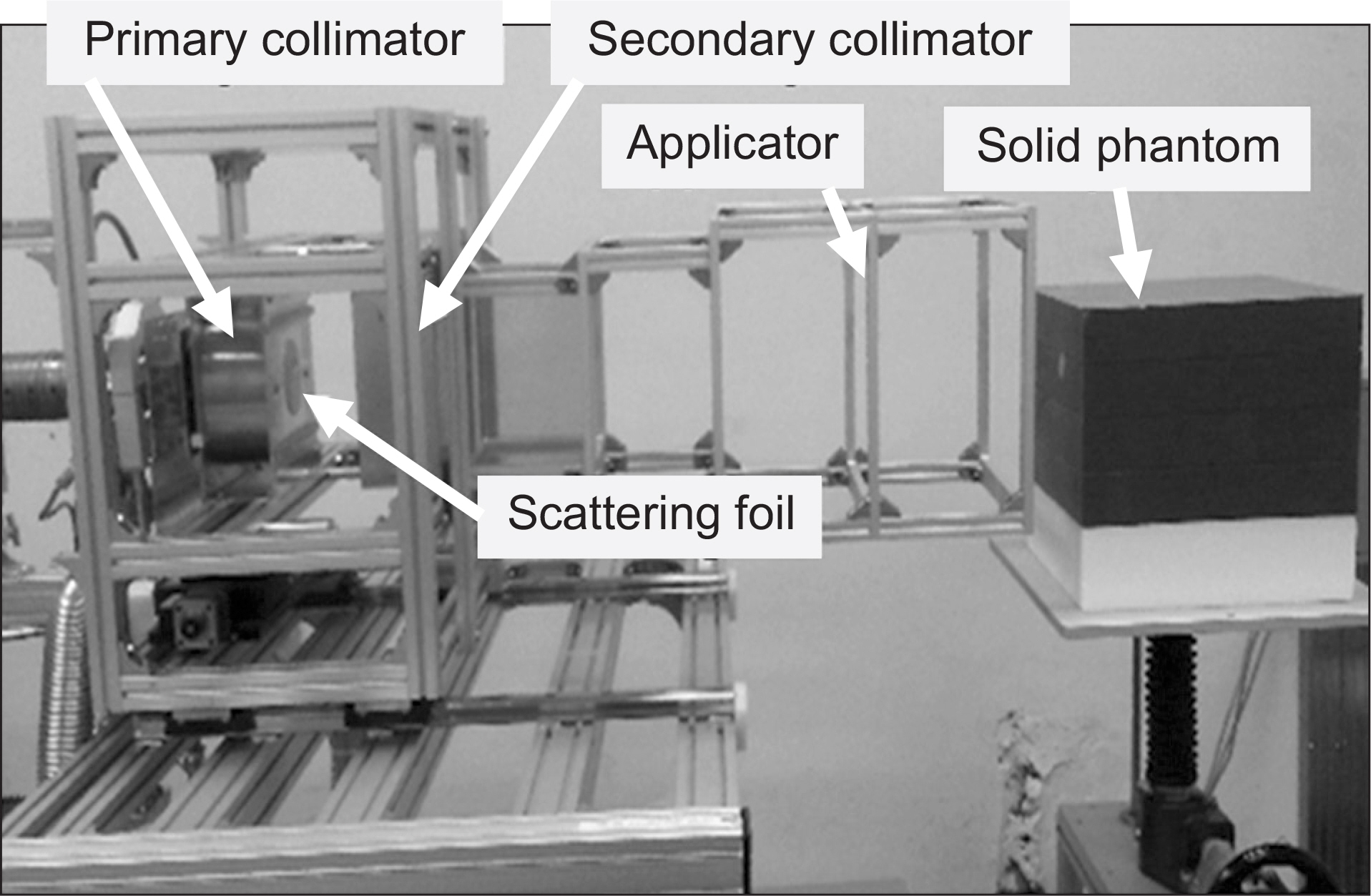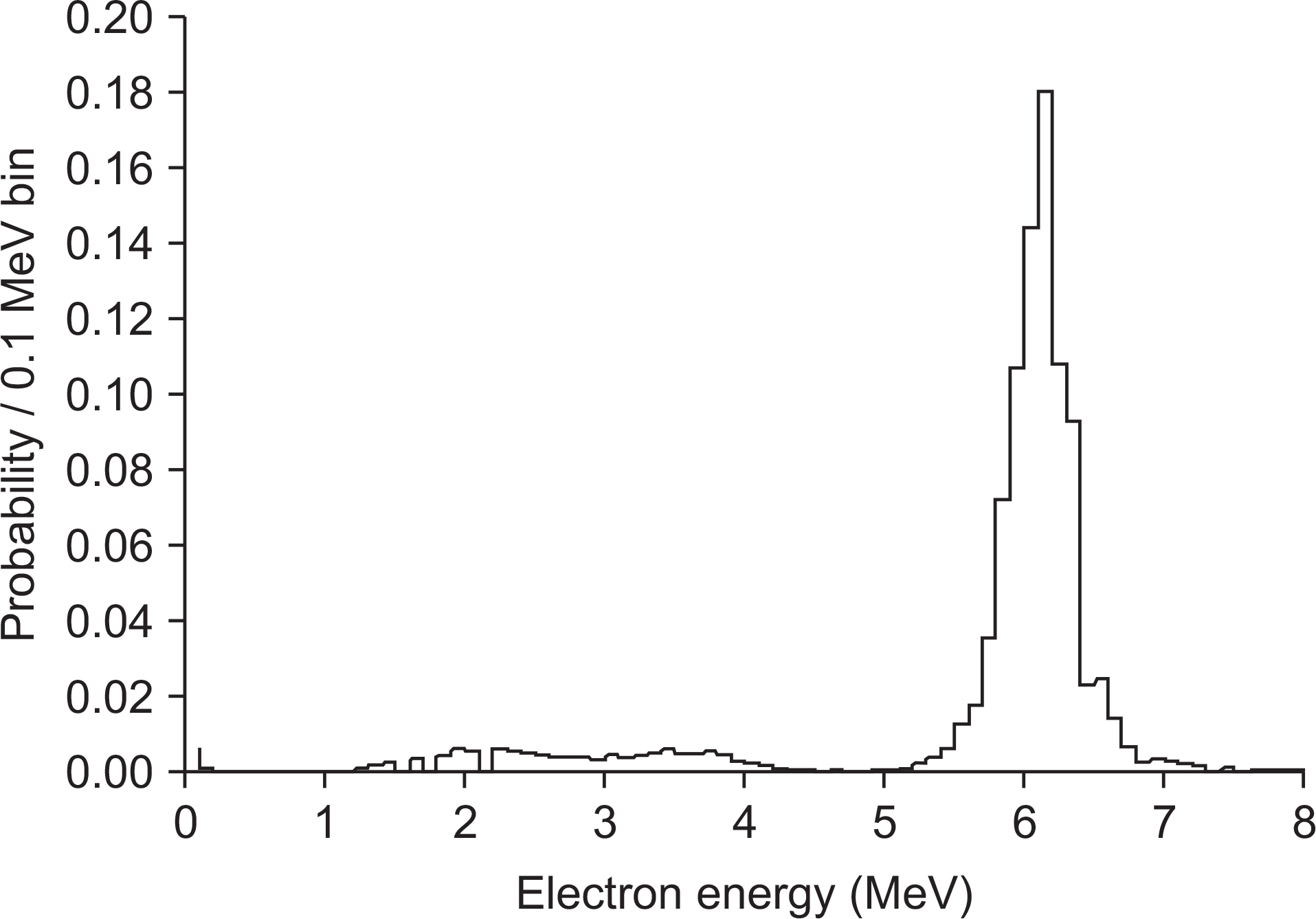Prog Med Phys.
2017 Jun;28(2):49-53. 10.14316/pmp.2017.28.2.49.
Electron Energy Distribution for a Research Electron LINAC
- Affiliations
-
- 1Research Center, Dongnam Institute of Radiological & Medical Sciences, Busan, Korea. physics@dirams.re.kr
- KMID: 2388208
- DOI: http://doi.org/10.14316/pmp.2017.28.2.49
Abstract
- The energy distribution was calculated for an electron beam from an electron linear accelerator developed for medical applications using computational methods. The depth dose data for monoenergetic electrons from 0.1 MeV to 8.0 MeV were calculated by the DOSXYZ/nrc code. The calculated data were used to generate the energy distribution from the measured depth dose data by numerical iterations. The measured data in a previous work and an in-house computer program were used for the generation of energy distribution. As results, the mean energy and most probable energy of the energy distribution were 5.7 MeV and 6.2 MeV, respectively. These two values agreed with those determined by the IAEA dosimetry protocol using the measured depth dose.
Keyword
MeSH Terms
Figure
Reference
-
1. Kim SW, Kang SK, Rhee DJ, et al. Measurement of electron beam output for the prototype compact linac. Progress in Medical Physics. 2015; 26:1–5.
Article2. Lim H, Lee M, Kim MY, et al. Measurement of energy parameters for electron gun heater currents and output dose rate for electron beams from a prototype linac. Progress in Medical Physics. 2016; 27:25–30.
Article3. Lim H, Jeong DH, Lee M, et al. Solid-state pulse modulator using Marx generator for a medical linac electron-gun. JINST April. 2016. 1–16.
Article4. Yi J, Lee M, Lee M, et al. Fabrication and high power RF test of a C-band standing-wave accelerating structure for medical application. In International Conference on Accelerators and Beam Utilizations (ICABU) Proceedings. 2015. 134.5. TRS-277: Absorbed dose determination in photon and electron beams: An international code of practice. Vienna: International Atomic Energy Agency. 1997.6. Kavar I, Novotny J, Kover Z, IJirousek P, Vavra S. Calculation of energy spectra for the therapeutic electron beams from depth-dose curves. Phys Med Biol. 1982; 28:1441–1446.7. Lee JO, Jeong DH. The calculation of energy distributions for clinical electron beams from nono energetic depth dose data. Kor J Med Phys. 2004; 15:39–44.8. SLAC Report-265. The EGS4 code system. Stanford Linear Accelerator Center. 1985.9. Kawrakow I, Mainegra-Hing E, Rogers DWO, Tessier F, Walters BRB. The EGSnrc Code System: Monte Carlo simulation of electron and photon transport (NRCC Report PIRS-701). Ottawa: National Research Council Canada. 2003.10. Walters BRB, Rogers DWO. DOSXYZ Users Manual (NRCC Report PIRS-794). Ottawa: National Research Council Canada. 2002.11. Rogers DWO, Faddegon BA, Ding GX, et al. Beam: A Monte Carlo code to simulate radiotherapy treatment units. Med Phys. 1995; 22:503–524.
Article
- Full Text Links
- Actions
-
Cited
- CITED
-
- Close
- Share
- Similar articles
-
- Measurement of Energy Parameters for Electron Gun Heater Currents and Output Dose Rate for Electron Beams from a Prototype Linac
- Calculation of Energy Spectra for Electron Beam of Medical Linear Accelerator Using GEANT4
- Statistical Analysis for Determining Initial Electron Beam Parameters in a 6MV Linac: A Simulation Study
- Field size and dose distribution of electron beam
- Dose distribution of high energy electron by shielding material




